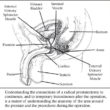Active Monitoring Has Its Risks

Things can get so out of control if the first evidence is observed but not acted upon. I am not a fan of active monitoring or watchful waiting for men with a life expectancy of 10 years or more.
There are several treatment options for men with low volume, low grade prostate cancer. In recent practice, one of them now frequently being considered is active monitoring.
The Debate
Considerable debate is going on in the medical community as regards potential over diagnosis of prostate cancer as a result of PSA screening. Now, some physicians recommend active monitoring or watchful waiting rather than immediate treatment for men diagnosed with low volume, low grade prostate cancer.
Their view is that the watching avoids over treatment of men with low-risk disease for whom existing medical treatment of CaP could potentially do more harm than good.
But unlike traditional watchful waiting with palliative intent only, the goal of active monitoring programs is to delay definitive therapy until there is evidence of disease progression and, hopefully, to offer treatment with curative intent at that point.
One problem with this strategy is that there are no validated criteria, nor is there a consensus on what characteristics should be used to trigger intervention – and the window of curability might be missed.
Mistrust
I base my present mistrust of active monitoring on pathology results from my surgical patients who, by their initial biopsy results, might have been placed on active monitoring with another physician and by other studies looking at outcomes of those in active monitoring programs.
Overall, our results in my patients who would be considered low risk, 27% of them had their Gleason score upgraded on the final pathology of the removed prostate specimen. And 16% had other adverse features such as extracapsular tumor extension or cancer cells at the surgical margins.
Our findings highlight one of the most difficult issues in management of low-risk prostate cancer: the frequent difference between preoperative clinical features of the cancer and postoperative pathology of the removed cancer.
More Concerns
I have other concerns about the use of active monitoring.
No consensus exists about what diagnostic information provides the best indication of aggressive disease and therefore the need for intervention.
Also, cancers can acquire mutations and aggressive features over time. An inappropriate delay in recognizing and identifying those changes could potentially compromise treatments in patients with these changes. This scenario is particularly applicable for men with a long life expectancy.
Unfortunately, there is little long-term data on clinical outcomes in men with localized (clinical stage T1 or T2) prostate cancer who have been on active monitoring.
In one study (Patel), at a follow up of 44 months, 25% of the men had progression as defined by one or more of the following: an increase in Gleason scores, increase in PSA velocity, DRE/transrectal ultrasound findings, and biopsy results.
Moreover, among currently published studies, there is a lack of consensus on eligibility criteria, follow up protocols and outcome measures – all making results difficult to evaluate.
And it’s not as if active monitoring is without adverse effects – including the necessity for frequent PSA testing, digital rectal exams and often multiple repeat biopsies.
Also, even if a man is considered to have low-risk disease, the psychological impact of the diagnosis and the anxiety from living with a non-treated cancer need to be considered.
In one study (Klotz), 12% of 101 men who came off active monitoring did so because of preference and not because of any objective evidence of disease progression or specific medical reasons.
Not There Yet
At some point, active monitoring could be a treatment option I would support. But not now.
Now, there is no accurate way to identify men with truly harmless prostate cancer based upon clinical characteristics alone. Unfortunately, it is just not possible at this time to identify these men preoperative with certainty.
In fact, what our data highlights is the need for better markers of disease aggressiveness, which, alone or in combination, could help determine which patients need to have their CaP treated.
Further clinical research is needed to help determine which patients can be safely managed with active monitoring and what threshold for intervention will not compromise treatment outcomes.
My opinion, for the time being, is that until better markers are available to indicate the nature of the disease before a radical prostatectomy, active monitoring could prevent a considerable number of patients with CaP, who have favorable characteristics, from getting effective treatment at a time when treatment has proven to prevent deaths and when cure can be possible.
*This opinion piece based is based on journal articles written by Dr. Catalona and his research collaborators.











